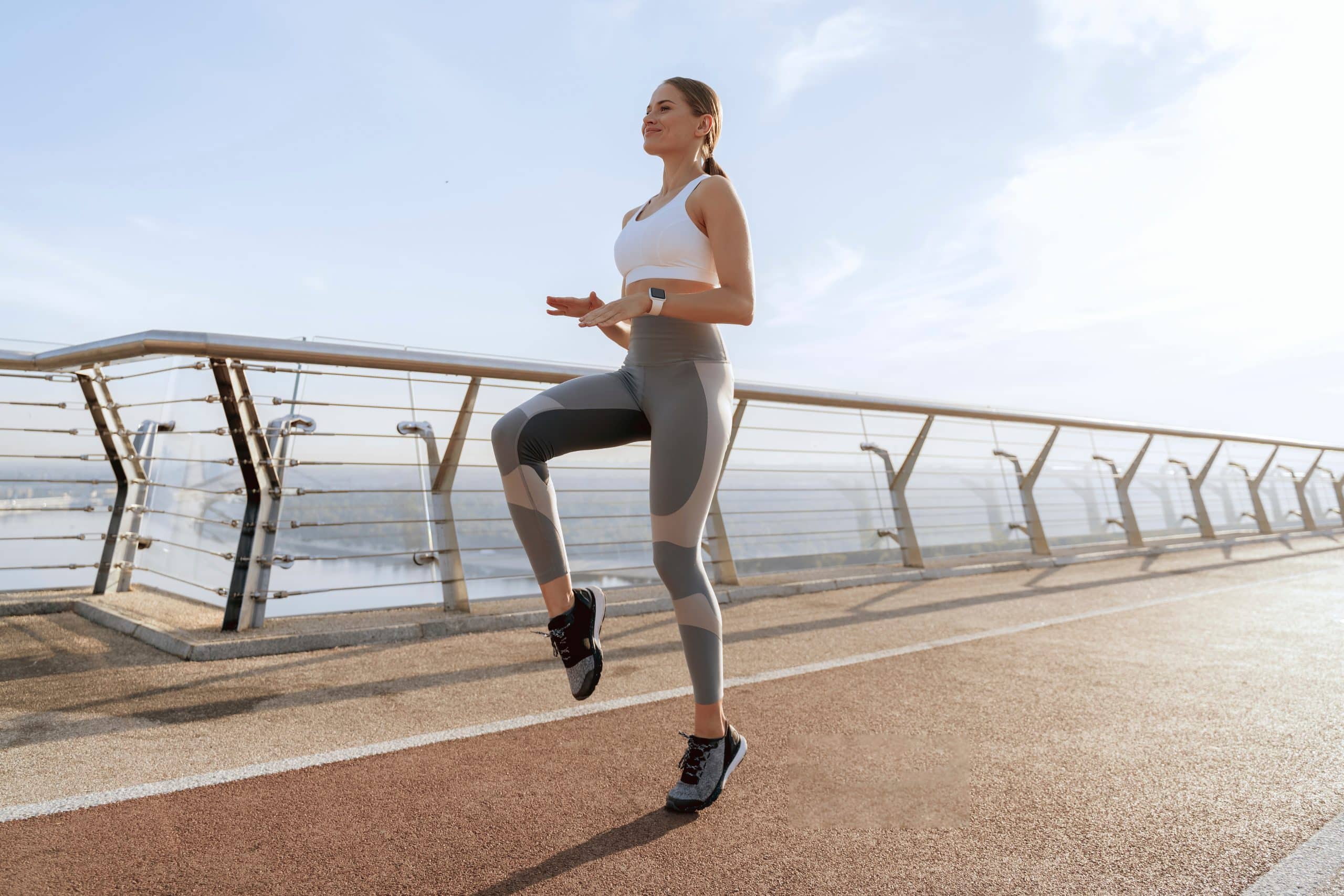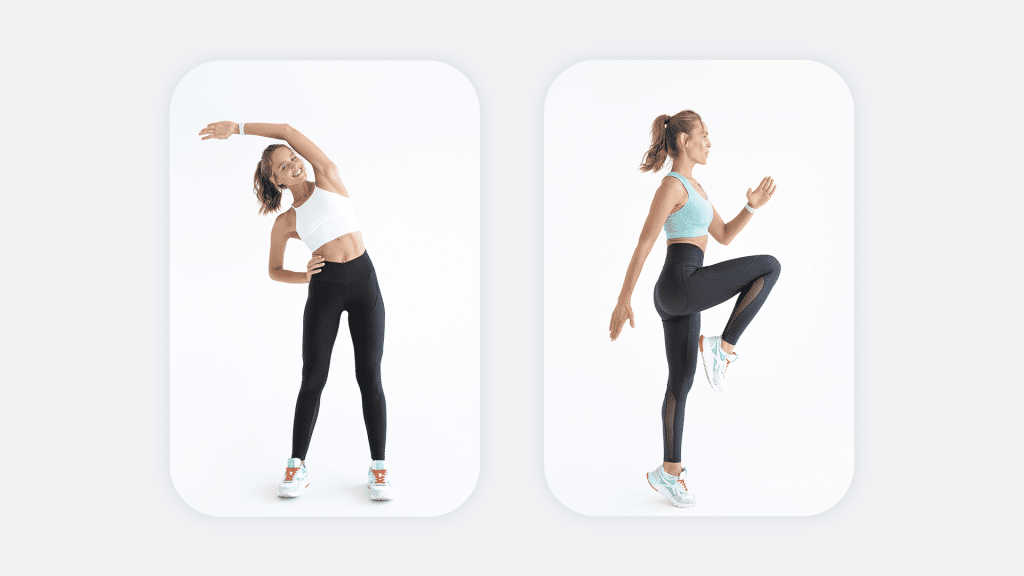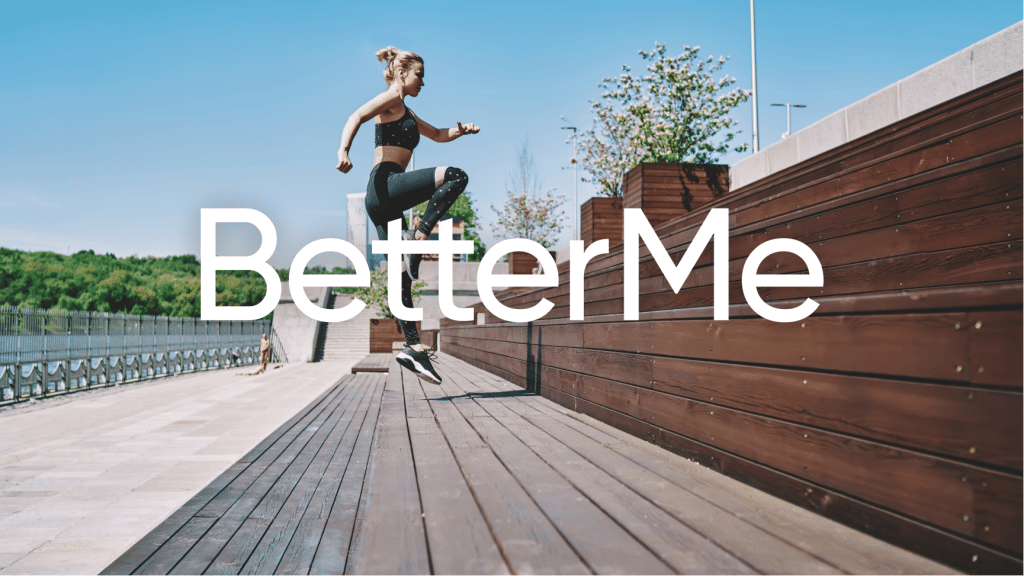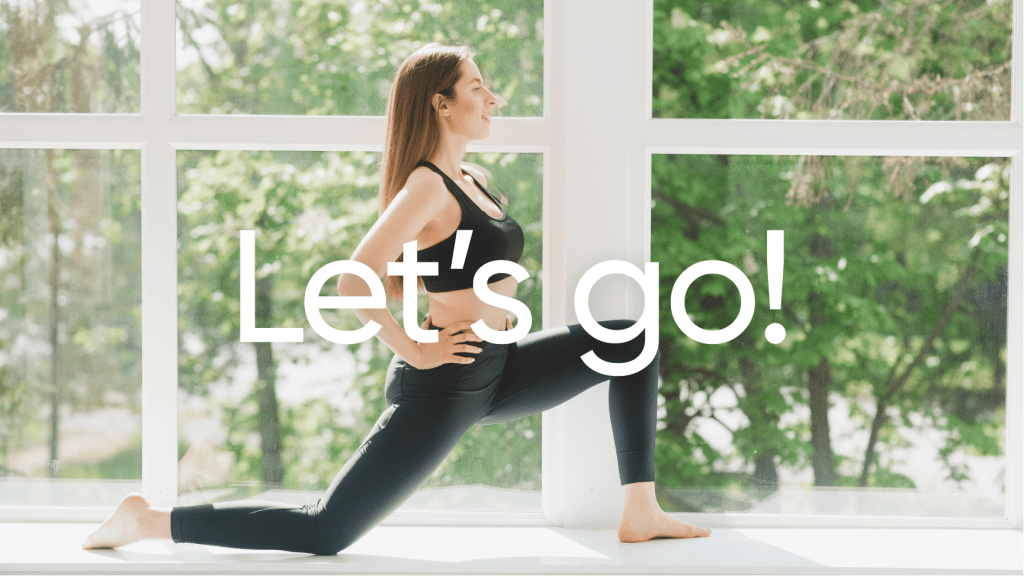Are you constantly juggling a hectic schedule, struggling to find the time and motivation to squeeze in a workout? Look no further! Running in place is a simple yet effective exercise that can be done anytime, anywhere. Think of it as a mini-workout that you can perform in the comfort of your own home, or even at work if you have only a few minutes to spare. In this blog post, we’ll explore the top 7 benefits of running in place for busy individuals like you. From improving cardiovascular health to enhancing mental well-being, this underrated workout offers a multitude of advantages that will keep you fit and healthy despite your jam-packed days. So, let’s dive in and discover how running in place can revolutionize your fitness routine.
What Type Of Exercise Is Running In Place?
Running in place is a type of aerobic exercise, also known as cardio. Aerobic exercises involve continuous movement that increases your heart rate and breathing, ultimately improving your cardiovascular endurance and overall fitness (2).
By simulating the motion of running without actually covering any distance, running in place provides an accessible and convenient workout option, especially for those with busy schedules or limited space.
This low-impact exercise effectively engages various muscle groups, making it an excellent choice for maintaining or improving physical health and stamina.
1. Improved Cardiovascular Health
Running in place is an effective exercise for enhancing cardiovascular health. As an aerobic activity, it increases your heart rate and strengthens the heart muscle.
A stronger heart can pump blood more efficiently, leading to better circulation and a reduced risk of heart-related issues (3).
According to the American Heart Association, engaging in regular aerobic exercises like running in place can help lower blood pressure, improve cholesterol levels, and reduce the risk of heart disease, stroke, and type 2 diabetes (8).
By incorporating running in place into your fitness routine, you can significantly contribute to maintaining a healthy cardiovascular system.
Read More: How To Run Longer And Faster With A Smarter Training Regimen
2. Weight Management
Running in place can be an effective tool for weight management and fat loss. This exercise burns calories by engaging various muscle groups, helping create a calorie deficit necessary for weight loss (5).
The number of calories burned depends on factors like intensity, duration, and individual body weight.
A study published in the Journal of Sports Sciences found that high-intensity interval training (HIIT), which can include running in place, promotes greater fat loss as compared to moderate-intensity continuous training (6).
By incorporating running in place into a HIIT workout, you can optimize calorie burning and support weight management efforts.
3. Muscle Toning And Strengthening
While running in place primarily targets the lower body muscles, such as the quadriceps, hamstrings, glutes, and calves, it also engages the core and stabilizing muscles.
This consistent engagement helps tone and strengthen these muscle groups, improving overall physical strength and endurance.
In addition to toning muscles, running in place enhances muscle coordination and balance. As you maintain a steady rhythm while running in place, your body learns to coordinate various muscle groups simultaneously, ultimately improving your stability and functional fitness.
4. Increased Lung Capacity
Regular aerobic exercise, like running in place, can improve lung function and capacity. As you engage in this exercise, your body demands more oxygen, prompting your lungs to work harder to supply the necessary oxygen to your muscles.
Over time, this increased demand for oxygen strengthens your respiratory muscles and enhances lung capacity (15).
Research shows that exercise including aerobic training can improve lung function in both healthy individuals and those with respiratory diseases, making running in place an excellent choice for bolstering lung health (1).
BetterMe is your fast-track ticket to a long-lasting weight loss! Tailor your fitness journey and maximize your results with just a couple of swipes!
5. Enhanced Mental Well-Being
Running in place and other forms of aerobic exercise have been shown to boost mental well-being by releasing endorphins, the feel-good hormones that alleviate stress and anxiety.
A study published in the Journal of Clinical Psychiatry found that aerobic exercises, including running in place, can improve mood, reduce symptoms of depression, and enhance overall mental health (9).
Furthermore, engaging in regular exercise can promote better sleep quality, which is essential for maintaining optimal cognitive function and mental well-being (10). Running in place can be easily incorporated into your daily routine, helping you achieve these mental health benefits.
6. Improved Bone Density
Weight-bearing exercises, like running in place, can help improve bone density and reduce the risk of osteoporosis (11). When you run in place, your bones experience a controlled impact, stimulating the growth and strengthening of bone tissue.
A study published in the journal Medicine & Science in Sports & Exercise found that high-impact, weight-bearing exercises can effectively maintain or improve bone mineral density in premenopausal women (12).
By engaging in running in place, you influence your body to make stronger bones and lower the risk of fractures and osteoporosis.
7. Convenient And Accessible Exercise
One of the most significant benefits of running in place is its convenience and accessibility. This exercise can be done anywhere, anytime, without any special equipment or gym membership.
Whether you’re at home, in a hotel room, or taking a break at work, running in place offers a practical solution for staying active despite a busy schedule.
Moreover, running in place is an adaptable exercise that can be modified according to your fitness level. You can adjust the intensity and duration to suit your needs, making it an excellent choice for beginners and experienced athletes alike.
Running In Place Vs Running: What’s The Difference
Running in place and running a distance both offer cardiovascular benefits and contribute to overall fitness, but they do have some key differences. Here, we’ll break down the distinctions between these two exercises.
1. Movement And Space Requirements
The most obvious difference between running in place and running is the movement involved.
Running in place simulates the motion of running without actually covering any distance, while running requires forward movement and more space. This makes running in place more accessible for people who have limited space or want to exercise indoors.
Read More: The Pilates For Runners Guide: Use This To Improve Your Core Strength
2. Impact On Joints
Running in place tends to be a lower-impact exercise compared to running, as it doesn’t involve the same level of force on the joints. When running, each footstrike generates a significant amount of impact, which causes strain on the knees, ankles, and hips over time (7).
In contrast, running in place allows for a softer landing and reduced impact on the joints, making it a more joint-friendly alternative for individuals with joint concerns or those looking to minimize the risk of injury.
3. Muscle Activation And Coordination
While both running in place and running a distance activate similar muscle groups, the intensity and coordination required may differ between the two exercises.
Running typically involves a greater range of motion, engaging various muscles throughout the body, including the core, arms, and legs. Additionally, running outdoors or on uneven terrain requires more balance and coordination compared to running in place.
On the other hand, running in place focuses primarily on the lower body muscles and may not engage the upper body and core muscles as intensely as running. However, it still provides an effective workout for improving cardiovascular fitness and muscle endurance.
4. Caloric Expenditure
Running generally burns more calories than running in place, due to the forward movement and increased energy expenditure required to propel the body forward. The number of calories burned during running depends on factors such as speed, distance, and individual body weight.
While running in place may not burn as many calories as running, it still offers a beneficial cardiovascular workout, especially when performed at a higher intensity or as part of a high-intensity interval training (HIIT) routine.
5. Skill Level And Progression
Running in place is an accessible exercise for individuals of all fitness levels, as it can be easily modified to accommodate one’s abilities. Beginners can start slow and gradually increase intensity and duration as their fitness improves.
In contrast, running may require more time and effort to build up the necessary endurance and strength, particularly for those new to exercise.
Progression in running often involves increasing speed or distance, which may be more challenging for some individuals compared to adjusting the intensity of running in place.
6. Environmental Factors
Running outdoors exposes you to various environmental factors, such as weather conditions, terrain, and air quality, which can affect your workout experience. These factors can either enhance or hinder your performance, depending on the circumstances.
On the other hand, running in place allows you to exercise in a controlled environment, free from external factors that may impact your performance.
This makes it a more consistent and reliable option for those who prefer to work out indoors or have limited access to suitable outdoor running spaces.
If you’ve mustered up the courage to crush your weight loss goal, let Betterme take the sting out of this demanding process. Our app will help you restructure your habits, remold your life and crank up your fitness results!
How To Create A Running In Place Workout
Creating a running in place workout is simple and can be tailored to your fitness level and goals. Here’s a step-by-step guide to assist your design of an effective running in place workout:
1. Warm-Up
Begin with a 5-10 minute warm-up to prepare your body for the workout (13). This can include dynamic stretches, such as leg swings, arm circles, and hip rotations, as well as light aerobic activities like jumping jacks or brisk walking.
2. Set Your Workout Structure
Decide on the structure of your workout based on your fitness level and goals. You can choose from the following options:
- Steady-state cardio: Maintain a consistent pace throughout the entire workout, aiming for a moderate intensity level.
- Interval training: Alternate between periods of high intensity and low intensity (active recovery) during your workout. For example, you could run in place at a fast pace for 30 seconds, followed by 30 seconds of jogging or marching in place.
- High-intensity interval training (HIIT): Perform short bursts of maximum effort followed by brief recovery periods. For instance, run in place as fast as possible for 20 seconds, then rest or jog in place for 10 seconds.
3. Determine Workout Duration
Choose the length of your workout based on your fitness level and available time. Beginners can start with 10-15 minutes and gradually increase the duration as their endurance improves.
Aim for at least 150 minutes of moderate-intensity aerobic activity or 75 minutes of vigorous-intensity aerobic activity per week, as recommended by the American Heart Association (14).
4. Incorporate Additional Exercises (Optional)
To add variety and challenge to your workout, consider incorporating other bodyweight exercises between running in place intervals. This creates a circuit-style workout that targets various muscle groups.
Some exercises you can include are:
- Squats
- Push-ups
- Lunges
- Planksd
- Mountain climbers
For example, you could perform 30 seconds of running in place, followed by 10 squats, and then another 30 seconds of running in place before moving on to the next exercise.
5. Cool Down And Stretch
After your workout, spend 5-10 minutes cooling down with a gentle jog or walk in place to bring your heart rate back to normal (4).
Finish with static stretches targeting the muscles used during the workout, such as the quadriceps, hamstrings, calves, and glutes. Hold each stretch for 15-30 seconds, taking deep breaths to aid recovery.
Conclusion
Running in place is an excellent exercise option for busy individuals looking to maintain or improve their fitness. With numerous benefits ranging from improved cardiovascular health to enhanced mental well-being, this accessible and convenient workout can be easily incorporated into your daily routine.
By prioritizing your health and taking advantage of running in place, you can enjoy a healthier and more balanced lifestyle, despite the challenges of a hectic schedule.
DISCLAIMER:
This article is intended for general informational purposes only and does not serve to address individual circumstances. It is not a substitute for professional advice or help and should not be relied on for making any kind of decision-making. Any action taken as a direct or indirect result of the information in this article is entirely at your own risk and is your sole responsibility.
BetterMe, its content staff, and its medical advisors accept no responsibility for inaccuracies, errors, misstatements, inconsistencies, or omissions and specifically disclaim any liability, loss or risk, personal, professional or otherwise, which may be incurred as a consequence, directly or indirectly, of the use and/or application of any content.
You should always seek the advice of your physician or other qualified health provider with any questions you may have regarding a medical condition or your specific situation. Never disregard professional medical advice or delay seeking it because of BetterMe content. If you suspect or think you may have a medical emergency, call your doctor.
SOURCES:
- A Meta Analysis of Physical Exercise on Improving Lung Function and Quality of Life Among Asthma Patients (2022, ncbi.nlm.nih.gov)
- Aerobic vs anaerobic exercise training effects on the cardiovascular system (2017, ncbi.nlm.nih.gov)
- Cardiovascular Effects and Benefits of Exercise (2018, frontiersin.org)
- Do We Need a Cool-Down After Exercise? A Narrative Review of the Psychophysiological Effects and the Effects on Performance, Injuries and the Long-Term Adaptive Response (2018, link.springer.com)
- Does running with or without diet changes reduce fat mass in novice runners? A 1-year prospective study (2016, pubmed.ncbi.nlm.nih.gov)
- Effect of High-Intensity Interval Training vs. Moderate-Intensity Continuous Training on Fat Loss and Cardiorespiratory Fitness in the Young and Middle-Aged a Systematic Review and Meta-Analysis (2023, mdpi.com)
- Effects of Foot Strike Techniques on Running Biomechanics: A Systematic Review and Meta-analysis (2020, ncbi.nlm.nih.gov)
- Exercise and Cardiovascular Health (2003, ahajournals.org)
- Exercise for Mental Health (2006, ncbi.nlm.nih.gov)
- Interrelationship between Sleep and Exercise: A Systematic Review (2017, hindawi.com)
- The Effectiveness of Physical Exercise on Bone Density in Osteoporotic Patients (2018, hindawi.com)
- The Role of High-intensity and High-impact Exercises in Improving Bone Health in Postmenopausal Women: A Systematic Review (2023, ncbi.nlm.nih.gov)
- Warming-up and stretching for improved physical performance and prevention of sports-related injuries (1985, pubmed.ncbi.nlm.nih.gov)
- What Exercise is Right for Me? (n.d., heart.org)
- Your lungs and exercise (2016, ncbi.nlm.nih.gov)












